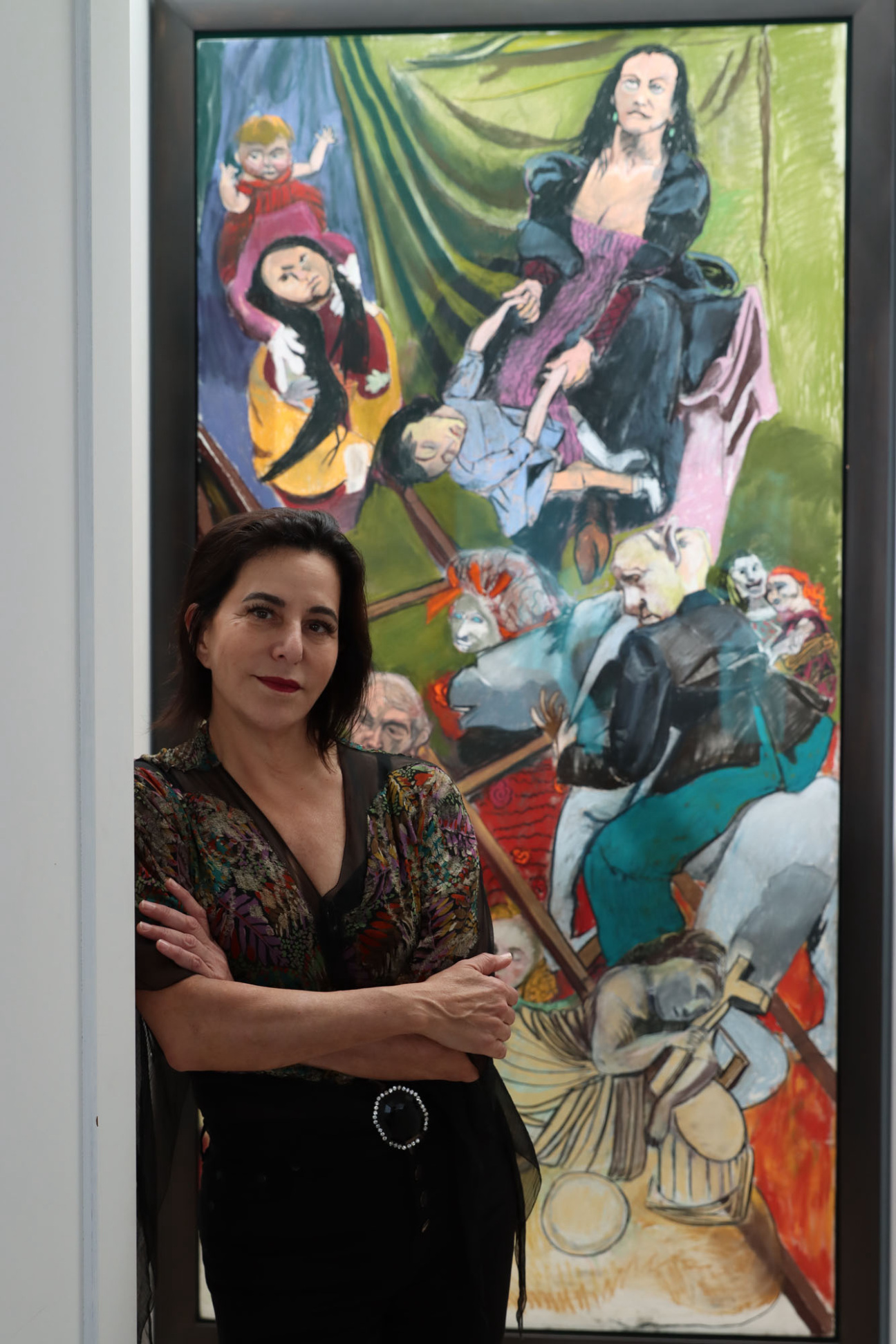
A peek inside Kim Manocherian’s abode features an expansive and startling mix of sculptures, paintings, and works on paper that includes the complete collection of Andy Warhol shoe prints. A trio of puppets sit on couches, a Jeffrey Gibson punching bag hangs from a ceiling, and a selection of sculptures from Urs Fischer to Willie Cole call her terrace overlooking Central Park home.
Adept in collecting works that stir emotions and spark dialogue, Manocherian's collection generously emphasizes women and emerging artists. The New York-based arts patron doesn't follow trends. Instead, she keeps sight of art that teeters towards provocation. “I don’t acquire based on trends," Manocherian explains. "I only buy work that I respond to viscerally.”
With over 600 pieces and counting in her vast collection, Manocherian sees no end in sight. The former CEO of her family’s business, New York Health and Racquet Club (NYHRC), Manocherian has been a patron and donor of MoMA, the Tate Britain, the Park Avenue Armory, and the New York Historical Society over the years. She sat down with CULTURED to share why she keeps buying art after nearly 40 years of collecting, what’s inspired her latest acquisitions, and her tried and true tips for newbies ready to purchase their first piece.
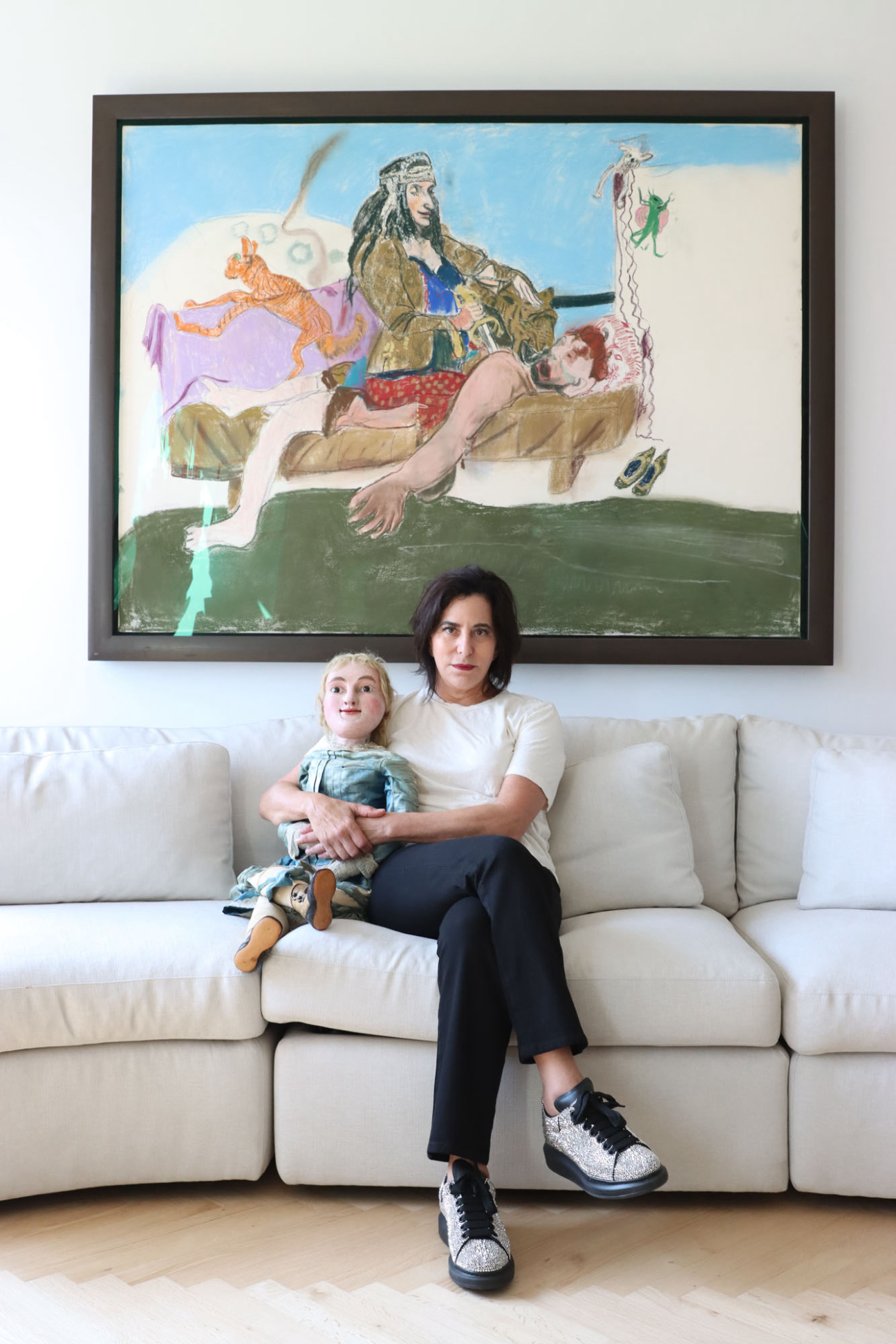
What initially drew you to collecting?
I was drawn to collecting from a young age, deeply influenced by my father's Iranian heritage and uncles who valued antiques and intricate craftsmanship. I absorbed their passion for the visual arts and creativity. They were all very critical of the contemporary and had a discerning eye for traditional art. My grandfather, an archaeologist, left behind artworks he found in Iran while, on my mother's side, her English lawyer father, an amateur artist, had incredible artifacts from traveling the world and collecting. I was exposed to art from all angles in my family, but I didn't set out to become a collector. Rather, I'm drawn to what I find inherently beautiful.
Admittedly, my taste isn’t for everyone. For me, collecting is a form of storytelling. My collection reflects my personal narrative and is based on intuition and my visceral reactions to works of art. If it doesn’t give me heart palpitations, I don’t want it—and this applies to all areas of the arts I’m drawn to, from fashion to interior design.
You’ve been collecting for 40 years. What still keeps you excited about acquiring work?
I'm always excited to see the possibility of artists I’ve never heard of before. The same way artists express themselves through art, is the same way my collection morphs into collages of my life and what’s important to me in real time. Over the years, what I collect is ever changing as my personal life evolves, which makes everything new all the time—and exciting.
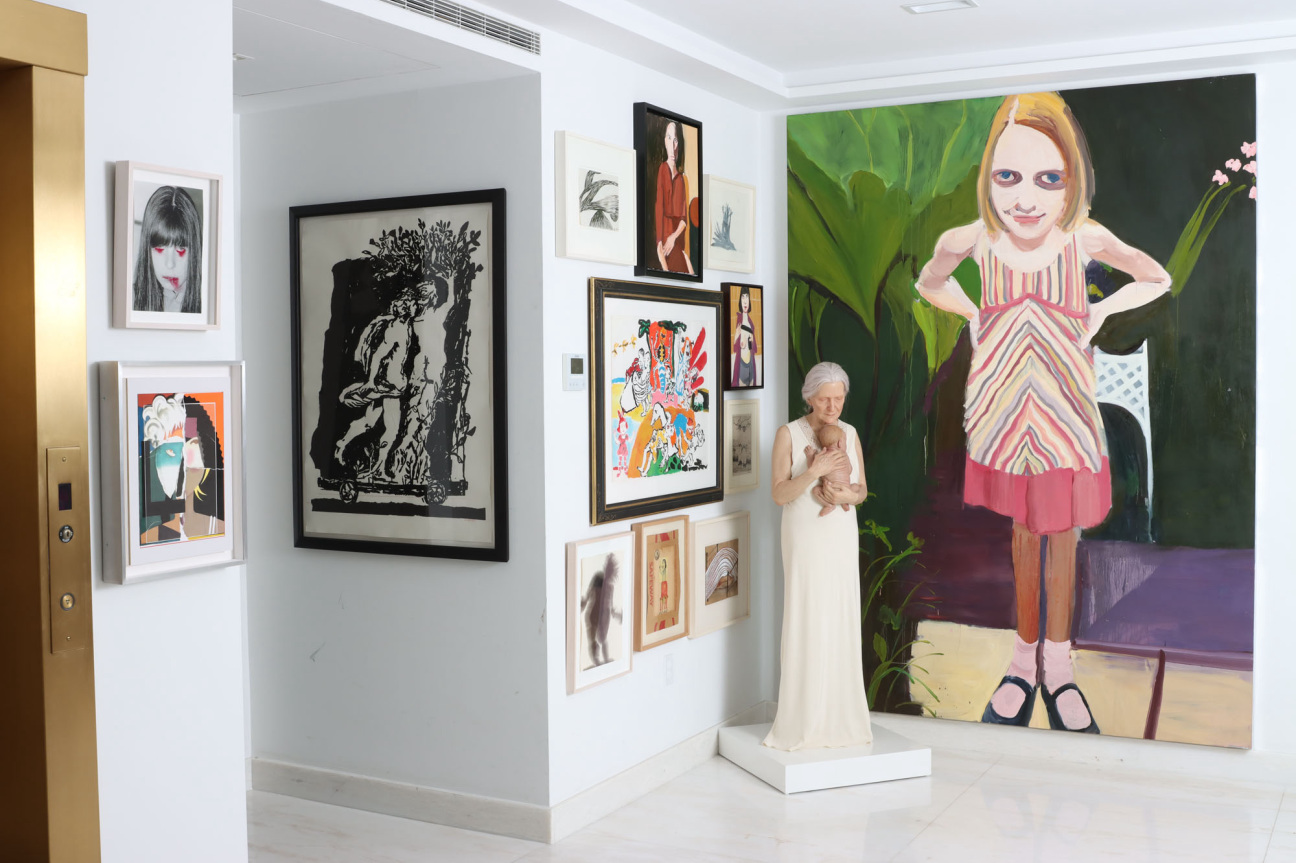
As the largest holder of works by Portuguese-British artist Paula Rego, what do you find most compelling about her work?
Several elements of Paula’s work intrigue me continuously including her composition, her adept use of color, and the sheer quality of her painting and drawing skills. I am really taken in by the storytelling and major social issues that she addressed in her work—particularly from a woman’s point of view. The juxtaposition of beauty and horror in her pieces is particularly striking. She challenges viewers by presenting something visually appealing while simultaneously portraying something deeply unsettling. This type of duality is very powerful to me.
I had the honor of sitting for Paula. She asked me what fairy tale or story I wanted myself to depict and after much thought I chose Scheherazade, now my collection’s name. What could be more perfect than a woman telling stories in order to save other women's lives—this choice felt authentic to who I am. Of course, Paula altered the story to her liking and has me killing the king. Works for me.
What is your interest in focusing on female narratives, and why is that important to you?
I didn't set out to collect female artists, but as a woman with a Middle Eastern upbringing and, unfortunately, as a woman who experienced domestic violence in a relationship after my marriage, I am drawn to work that speaks to me personally and that is often work by women. For a while, I sought out art where women used their creative expression to address and heal from abuse, particularly within Middle Eastern contexts. I found some very obscure art along the way, and as I mentioned, my collection is my own expression.
Miriam Kahn's paintings, fueled by anger, strike a chord with me personally. Similarly, Paula Rego's humor resonates deeply and I think reflects her fearless spirit, which I admire. I find humor to be the best cure and if there is anything that ties my collection together, I would say it is storytelling through irreverence. Everyone sees something different in the work and it reveals so much about the person seeing the work. But I also feel that social issues are not limited to women. For instance, Fred Tomaselli’s work using newspaper articles is cordial, yet powerful.
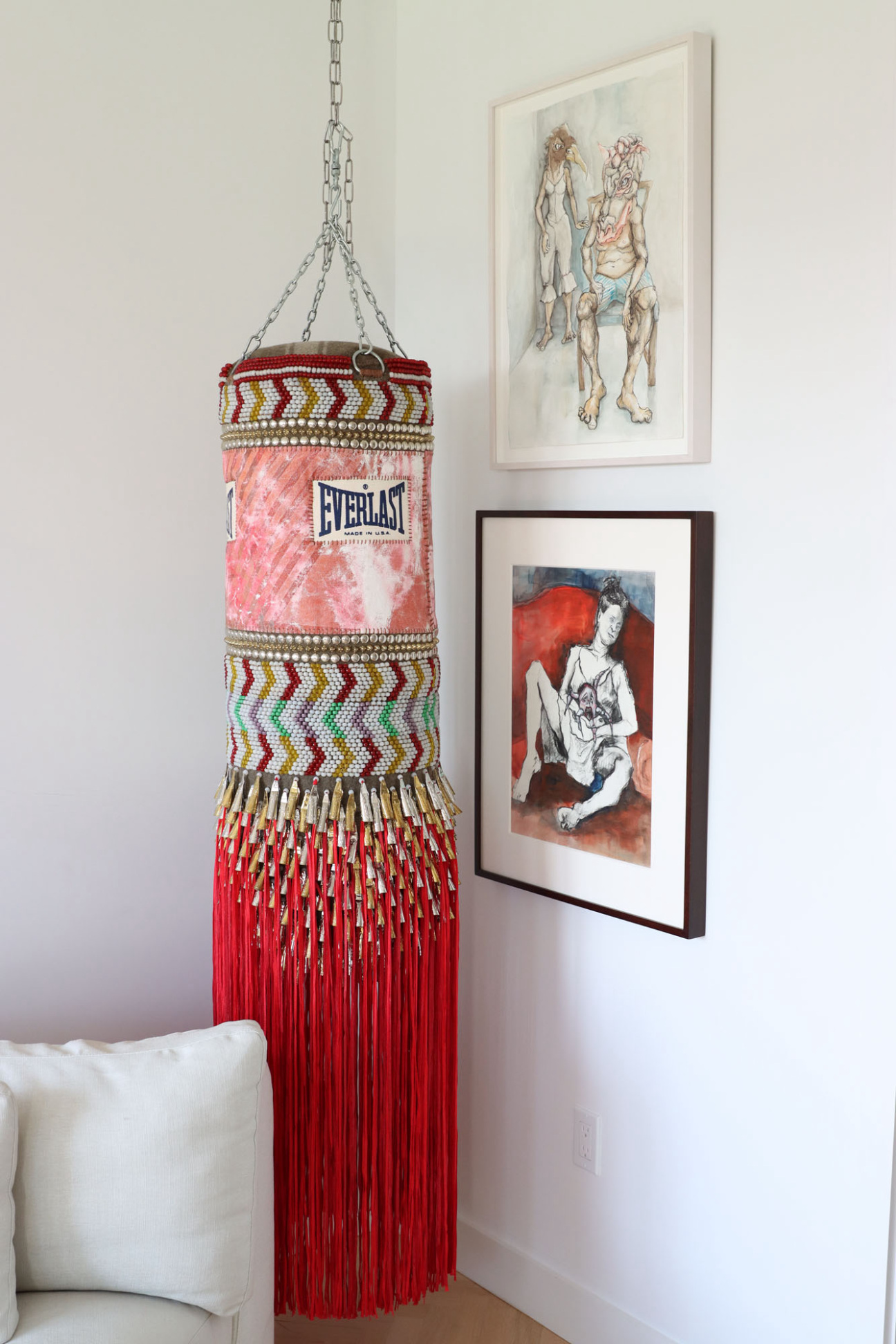
What’s your most prized piece in your collection?
My favorite and most prized piece changes all the time. It's impossible to pinpoint just one. Much of the artwork I collect holds a personal and sentimental value, first and foremost. The way I see it, my collection is my legacy to my children, and they will choose what they love to keep, some they may choose to sell and there are some works that belong in museums to be shared with the world.
How did you come to acquire the complete collection of shoe prints by Andy Warhol?
I came across this portfolio of shoes at the Susan Sheehan Gallery and was instantly intrigued. Although it is not figurative work, there is some level of storytelling in the names of each shoe, but it's the colors and simplicity of the work that I was most attracted to. It was a long time ago, and the work was very available and affordable at that time. Although, it was scary for me as I had never made such a significant purchase.
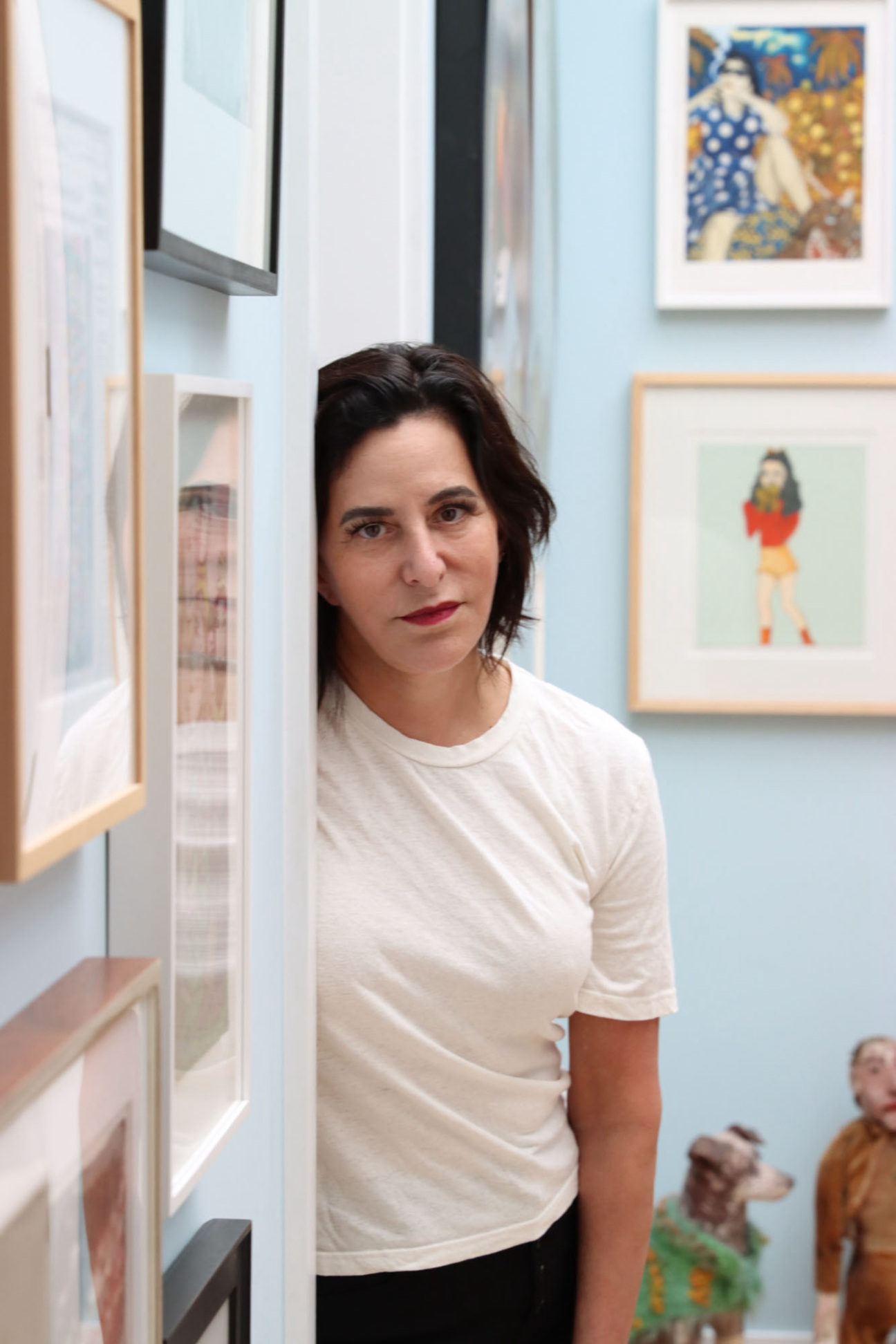
How has the emerging art scene influenced your collection?
I love what I love. Whether an established work, or artwork I find at a flea market. I find the trends interesting, as art is such a mirror to how people are feeling at different times, but I don’t acquire based on trends. I will only buy work that I respond to viscerally. I love finding young artists that are inspiring, and I have tried to be supportive to young artists in many ways. I have even had two unofficial residencies in my home.
Which work in your home provokes the most conversation from visitors?
Sam Jinks’s Woman and Child sculpture of an older woman with a baby provokes the most conversation. It’s so realistic, and many people find her very disturbing. I've had some fun reactions that I can't repeat involving some choice language from a few people who got scared when they saw her. Personally, I find her tender and beautiful.
Which artist are you currently most excited about and why?
Currently, I am very excited about an emerging artist, Dragan Strukelj. I love his acrylics for the intensity and how he skillfully illustrates movement in the work. He deals with a lot of identity issues and judgment. His oil paintings are very different from the drawings. They are also very intense and there is clearly a story, but one that is left to the viewer’s imagination. One of my favorites that I have in my collection is his Levitation painting. It’s such a stellar work, he should be on your radar!










 in your life?
in your life?

